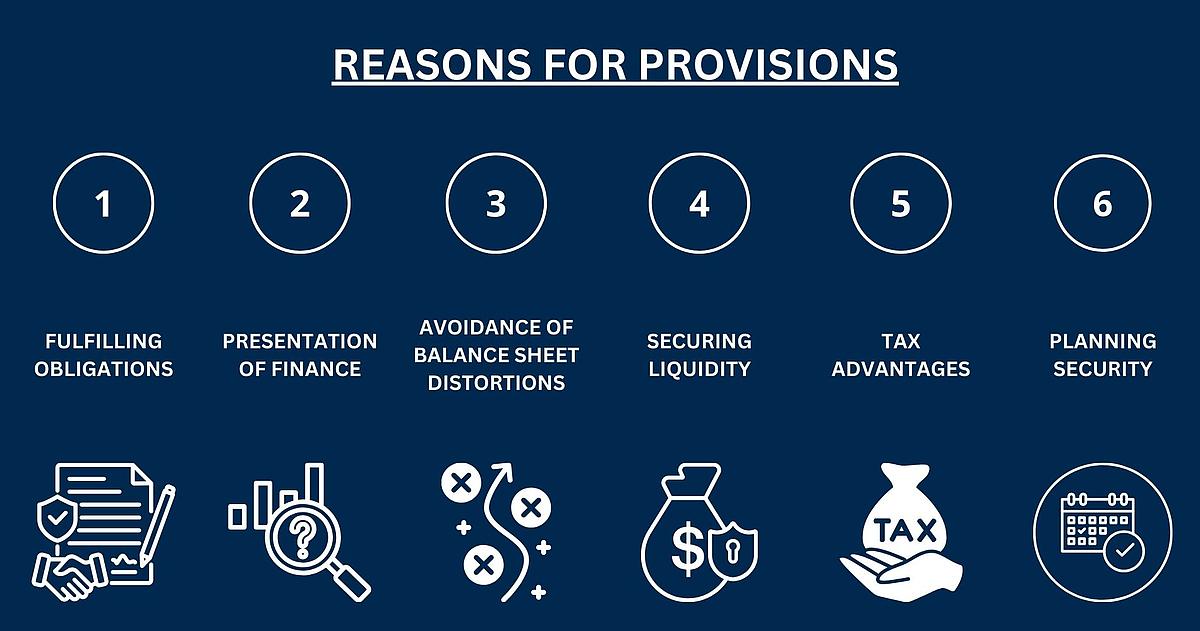Reversal of Provisions
Provisions are reversed when the underlying obligation occurs or no longer exists. The amount of the actual payment is offset against the provision recognized. If the actual obligation is higher or lower than the provision, there is a difference which must also be posted.
Release and payment of the provision (amount matches)
- Example: Reversal and payment of the provision for legal costs in the amount of EUR 10,000
- Posting record: Provision for legal costs 10,000 euros to bank 10,000 euros
Release and payment of the provision (amount is higher than the provision)
- Example: Actual legal costs amount to 12,000 euros, provision was 10,000 euros
- Posting records:
- Provision for legal costs 10,000 euros to bank 10,000 euros
- Litigation costs 2,000 euros to bank 2,000 euros
Release and payment of the provision (amount is lower than the provision)
- Example: Actual legal costs amount to 8,000 euros, provision was 10,000 euros
- Posting records:
- Provision for legal costs 10,000 euros to bank 8,000 euros
- Provisions for legal costs 2,000 euros to income from the reversal of provisions 2,000 euros
Booking Provisions
Provisions are booked both when they are created and when they are reversed. The correct accounts and amounts must be used to ensure accurate and comprehensible accounting.
Important aspects when booking provisions:
- Accuracy of estimate: The amount of the provision should be estimated as accurately as possible to minimize subsequent adjustments.
- Regular review: Provisions should be reviewed and adjusted regularly to ensure that they reflect current expectations and obligations.
- Documentation: The reasons for the creation and reversal of provisions should be well documented to ensure traceability.





















